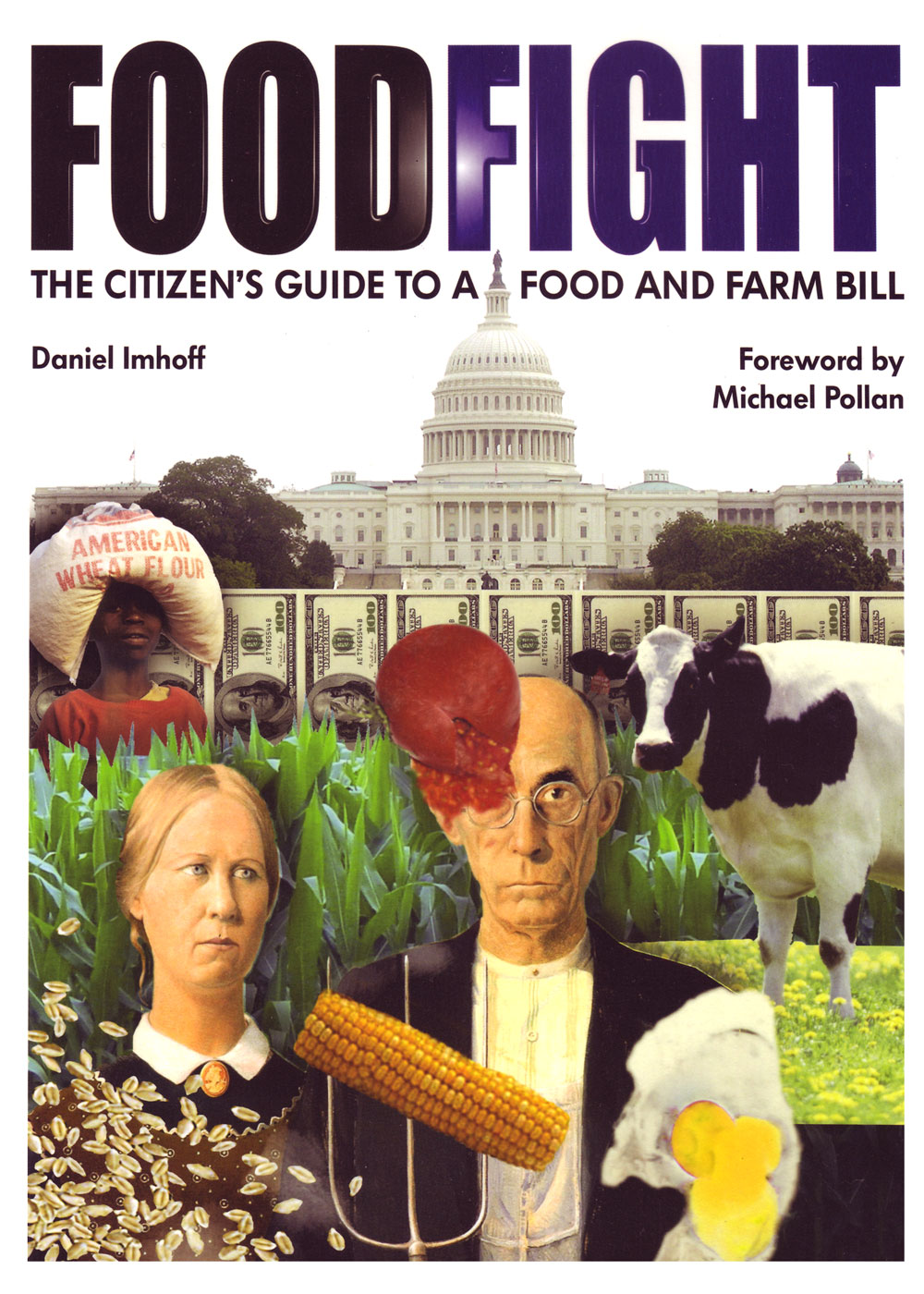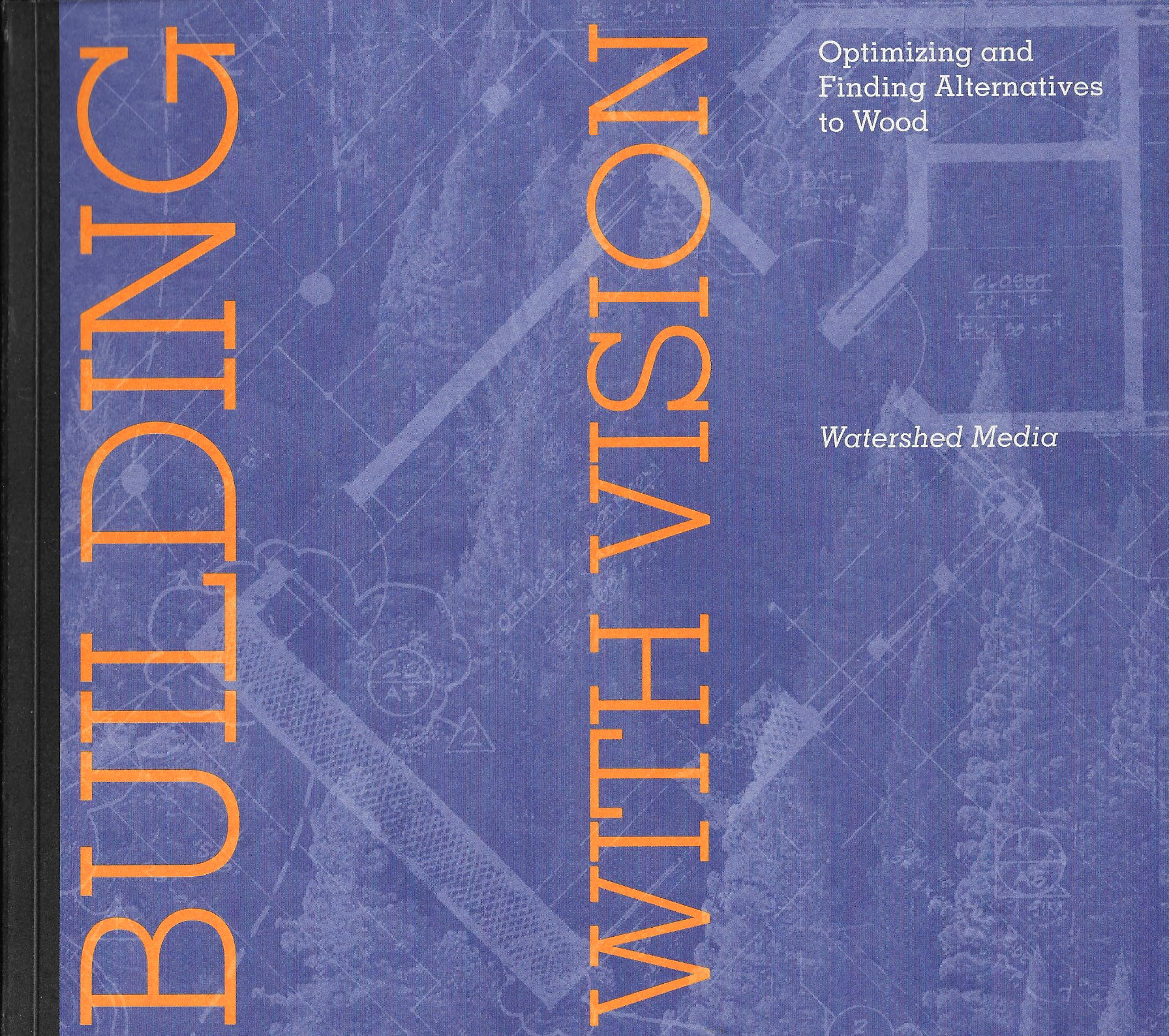Dan Imhoff has written hundreds of articles and essays as well as numerous books on topics ranging from food and agriculture to conservation and ecological design. His work has appeared in the Los Angeles Times, The Nation, Atlantic Monthly and dozens of publications. He was the lead author on CAFO: The Tragedy of Industrial Animal Factories, awarded the Nautilus Gold Prize for Investigative Reporting in 2011. Other books include: The Farm Bill: A Citizen’s Guide (2018); Food Fight: The Citizen’s Guide to the Next Food and Farm Bill (2007, 2012); Farming and the Fate of Wild Nature: Essays in Conservation-Based Agriculture (2006); Paper or Plastic: Searching for Solutions to an Overpackaged World (2005); Farming with the Wild: Enhancing Biodiversity on Farms and Ranches (2003); and Building with Vision: Optimizing and Finding Alternatives to Wood (2001). Imhoff’s work has directly contributed to the founding of nonprofit organizations such as the Wild Farm Alliance and Animal Agriculture Reform Coalition. He has popularized the importance of critical legislations, such as the US Farm Bill, and helped catalyze California’s landmark fee on disposable plastic bags.
Books

The Farm Bill: A Citizen’s Guide
with Christina Badaracco, 2018, Island Press
Introduction by Marion Nestle

Food Fight: The Citizen’s Guide to the Next Food and Farm Bill
2012, Watershed Media
Foreword by Michael Pollan

The CAFO Reader: The Tragedy of Industrial Animal Factories
2010, Watershed Media
Available in a Japanese language edition.
The CAFO Reader is a companion book to the larger photo-essay volume, CAFO: The Tragedy of Industrial Animal Factories. It is possibly the most powerful indictment of factory farming ever compiled, with essays from 44 of the world’s leading experts. It also offers a vision for a food system that leaves behind the horrific 20th century model of Concentrated Animal Feeding Operations. The CAFO Reader brings the tragic world of industrial food production into sharp focus with essays on every facet of factory farming: health, environment, animal welfare, labor, politics, economics, and so on. It has become a relied-upon resource for activists, food policy makers, academics, the media and the general public for many years. This project was a follow-up to the highly successful project Fatal Harvest, published in 2002.

CAFO: The Tragedy of Industrial Animal Factories
2010, Earth Aware
Foreword by Doug Tompkins
Winner of the 2011 Nautilus Gold Prize for Investigative Reporting.

Food Fight: A Citizen’s Guide to the Farm Bill
2007, Watershed Media
Preface by Fred Kirschenmann, Foreword by Michael Pollan
In the winter of 2006, I began a series of citizen’s guides on the Farm Bill. Every five years, the U.S. Congress passes a little understood legislation that is primarily accountable for setting the budgets and work plans for the U.S. Department of Agriculture. The Farm Bill is anything but bureaucratic trivia. It is an essential economic and policy engine that drives the food and farming system and provides nutritional assistance to tens of millions of Americans–many of them children. It also finances some of the country’s most significant conservation programs. Thanks to Food Fight, more and more citizens are realizing just how much is at stake in this political chess game. The book traces how the legislation has evolved, from its first incarnation during the Great Depression, to today, when America has become the world’s leading agricultural powerhouse. Readers learn, perhaps most importantly, the battles that determine the direction of food policy in the coming years.

Farming and the Fate of Wild Nature: Essays on Conservation-Based Agriculture
2006, Watershed Media/Wild Farm Alliance

Paper or Plastic: Searching for Solutions to an Overpackaged World
2005, Watershed Media/Sierra Club Books
Foreword by Randy Hayes

Farming with the Wild: Enhancing Biodiversity on Farms and Ranches
2003, Watershed Media/Sierra Club Books
Foreword by Fred Kirschenmann

Building with Vision: Optimizing and Finding Alternatives to Wood
2001, Watershed Media
Preface by Randy Hayes, Foreword by Sam Van der Ryn

The Simple Life Guide To Tree-free, Recycled and Certified Papers
1999, Simple Life Design
Foreword by Randy Hayes


